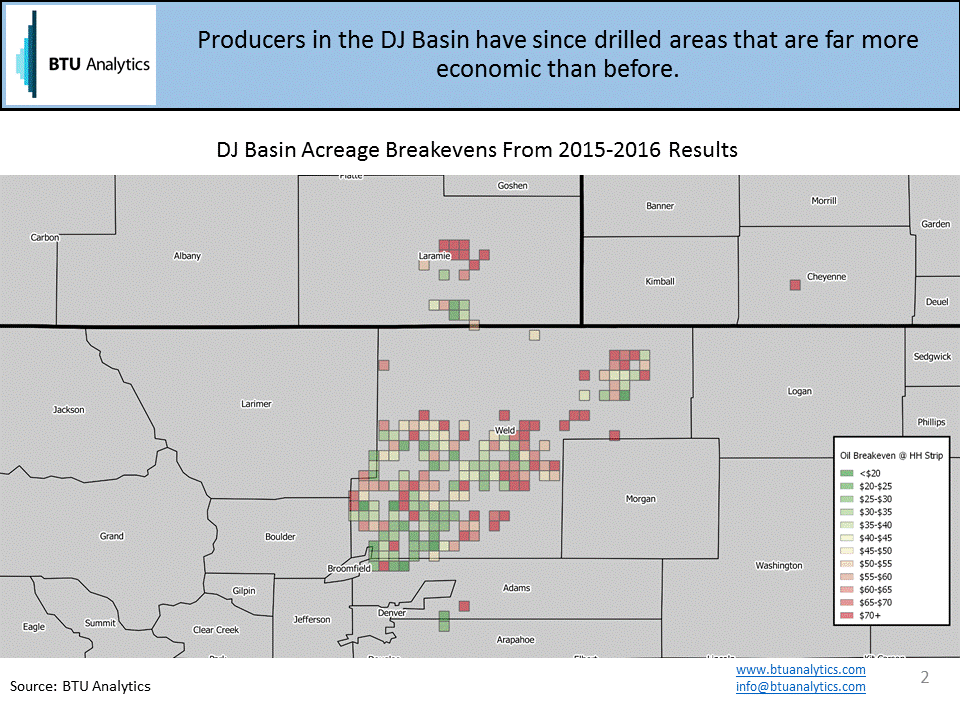BTU Analytics has spent a large amount of time and effort looking at returns and breakevens of individual wells across the country. The economics of an individual basin is an important metric when determining how oil and gas plays stack up against one another. However, another important metric is how those economics have been changing over time. Looking at which plays have improved the most (such as the Permian), or which ones have seen economic improvements slow (like the Bakken) can tell a lot about what kind of potential those basins have. In this Energy Market Commentary, BTU Analytics’ has run breakeven analysis of how DJ Basin economics have been changing over time.

The map above shows where different acreage breaks even in the DJ basin using well results from 2013 and 2014. What can be seen from this is a lot of acreage in the orange and red, representing acreage that, on average, had a breakeven of $60/bbl or above. In 2013 and 2014, a well with a $60/bbl breakeven would have had high rates of return at the $80-100/bbl crude prices that existed at the time. Drilling that acreage made sense, especially if an operator didn’t have other places to drill in their portfolio. However, that acreage would not make a lot of sense to drill in today’s $50/bbl environment.

The second map shows how economics have since changed. As prices collapsed starting late 2014, operators were forced to respond. They had to focus on drilling good acreage and bringing down well costs, and the map above shows the results of those changes. Using wells from 2015 and 2016 shows a stark difference in the amount of acreage that will breakeven below $50/bbl. While these improvements are a good sign for producers in the basin, it’s important to keep in mind that the economics of these wells cannot continue to improve at rates like this. Margins for service companies are cyclical in nature, meaning that service costs are back on the rise. Operators may continue to see gains in inefficiencies, but some of that will be offset by a rise in overall drilling and completion costs.
To see more on how economics have been changing over time (especially in plays such as the Permian and Haynesville) as well as assumptions behind the economics model, check out BTU Analytics’ E&P Positioning report.









